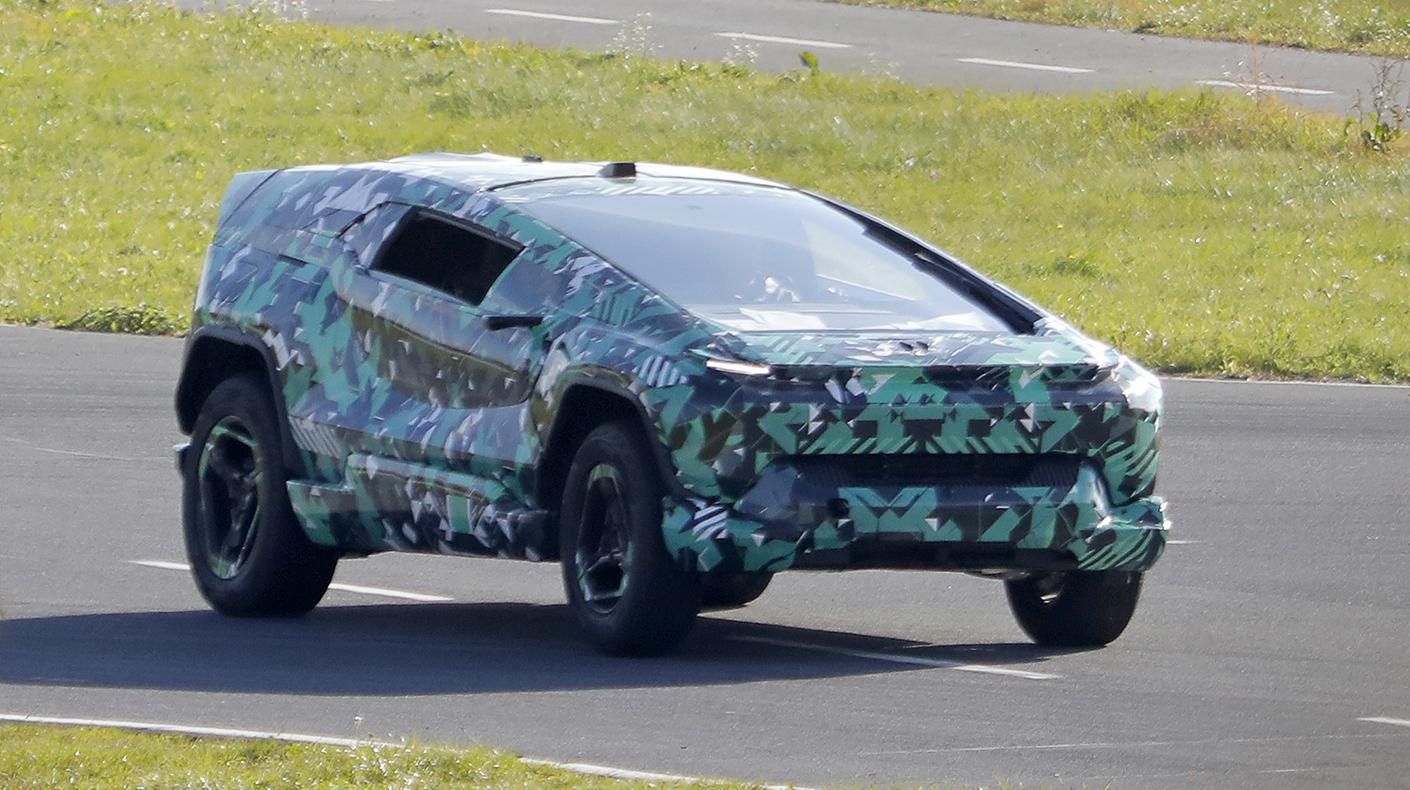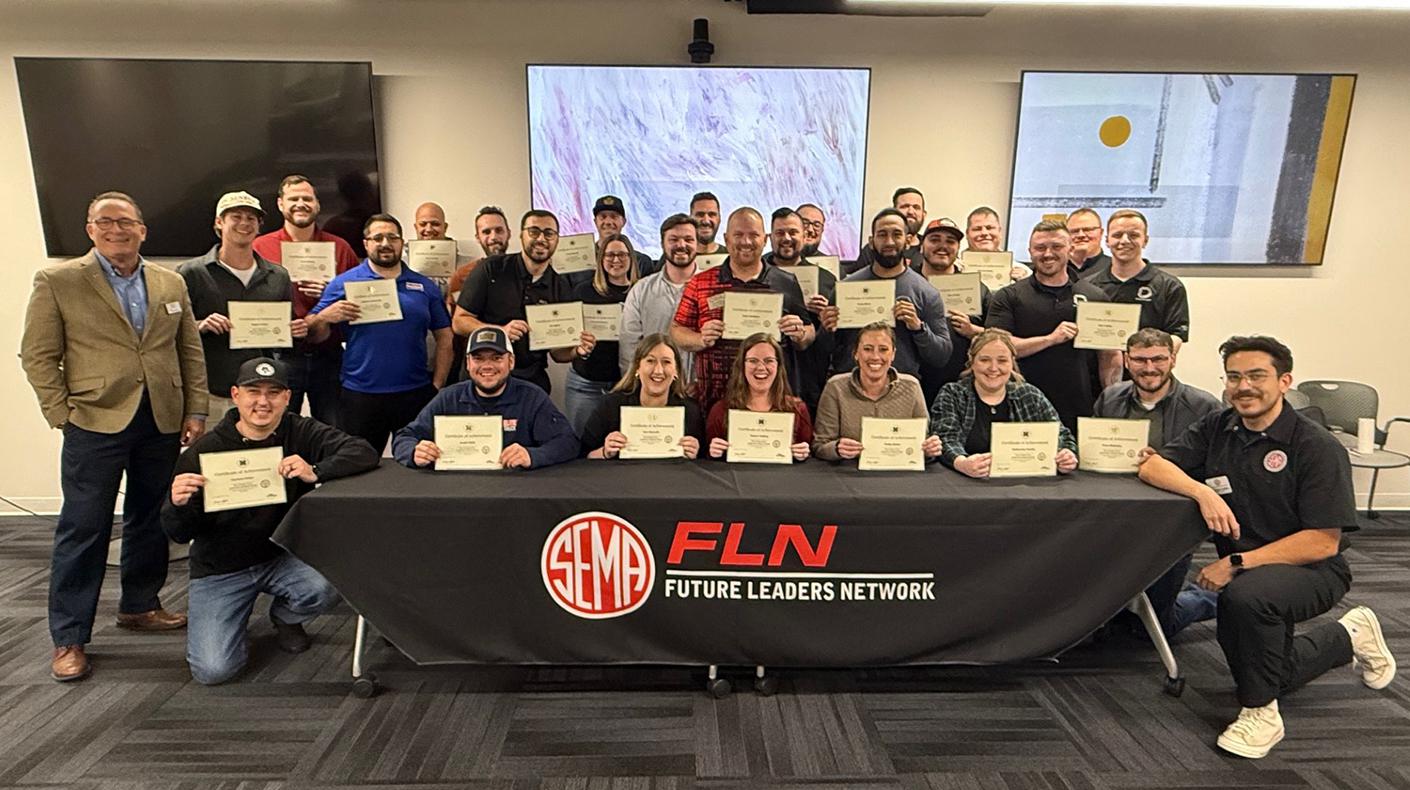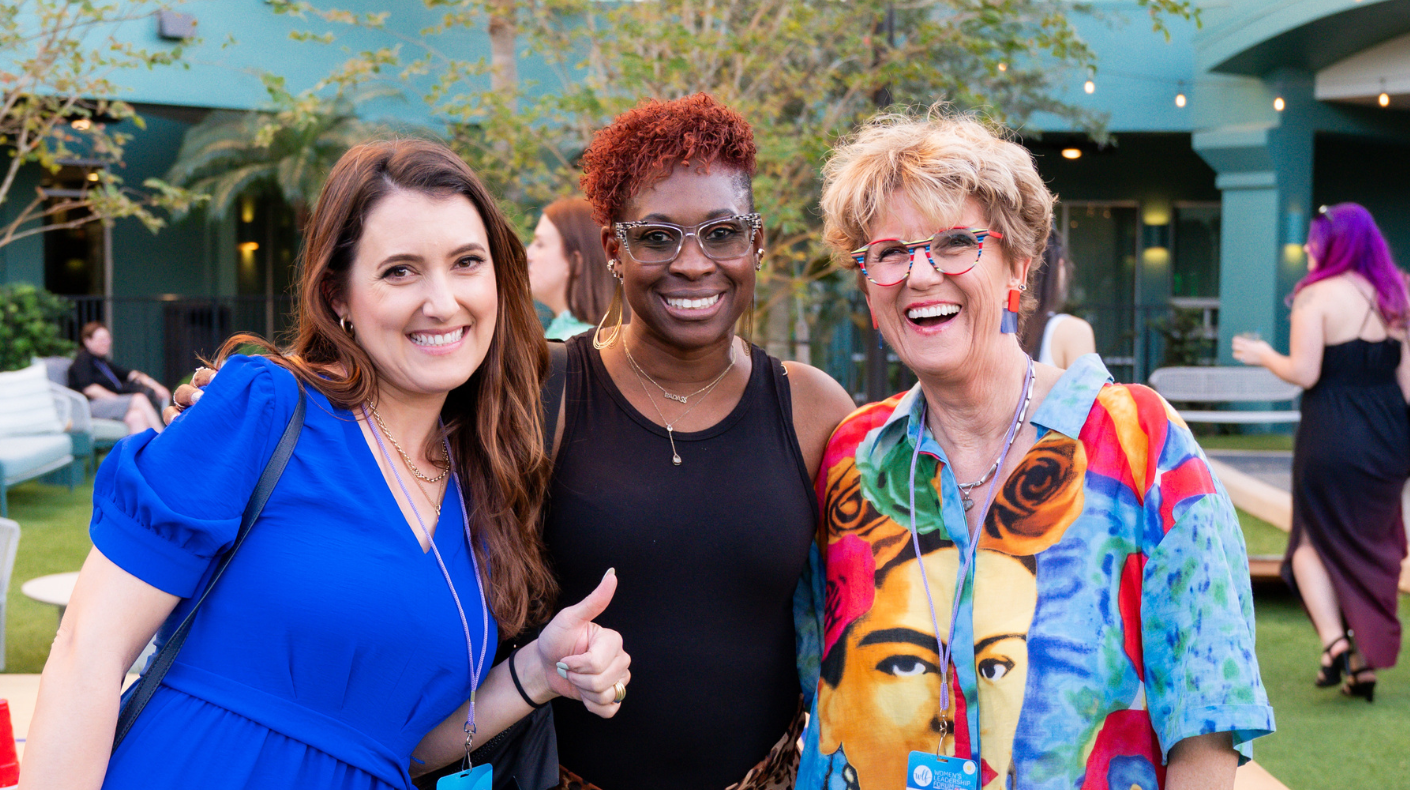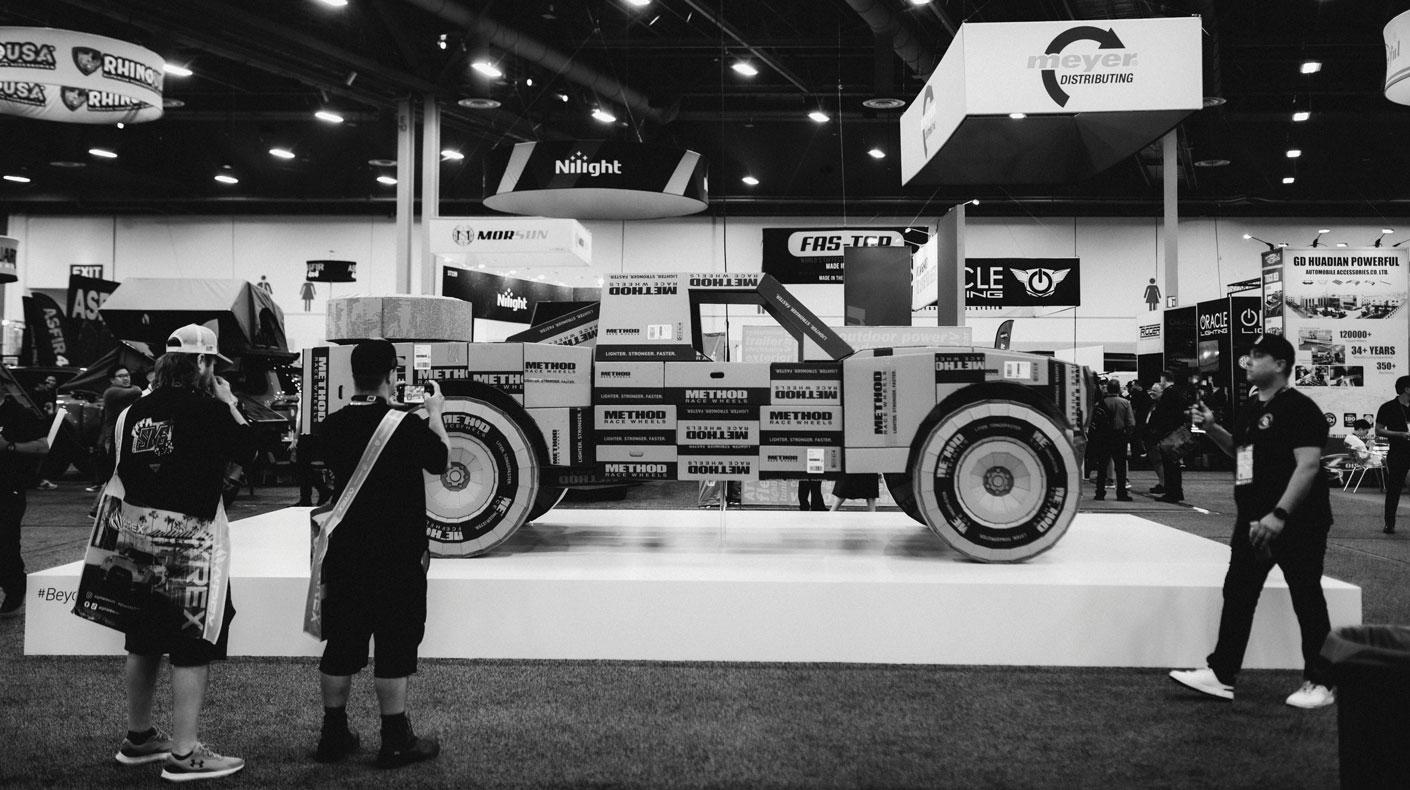By Jason Mulroney

It's not often that a mechanic is considered a household name. But having built a subscription army of more than 10 million and counting, this man has established himself as the go-to, one-site-fixes-all resource for anyone looking to tackle automotive repair. The recent recipient of SEMA's Content Creator of the Year award, ChrisFix is passionate about automobiles, fishing and, perhaps above all, people.
We recently sat down with ChrisFix to learn more.
SEMA Magazine: When and how did your passion for cars begin?
ChrisFix: It actually began with boats. I love fishing. When I was a little kid, my parents decided to get a small boat so we could go fishing, go to the beach and cruise around. To afford the boat, my dad and I would work on it. That was back in second grade. We'd change this and that, and he would show me how to change the spark plugs. He'd show me how to change the water pump. He'd explain how to do it as he watched me. I remember he'd reach down and help me lift the wrench to break the bolt loose. And then I'd do it the rest of the way, or he'd do one spark plug and then watch me do the rest.
I learned all the basics of engines working on that boat. Oil changes, coolant, all that stuff. How it worked, and why this different system worked. And then my boating neighbors would be like, "You mean Chris was able to get in that tight spot? Can he come and do my boat?" And they'd pay me in tools, or they'd pay me like $100. That's how I got my start. I was like, "This is cool."
Although the boat got things started, my dad and mom were car people. My mom had an MGB, and my dad had Mustangs, Cadillacs and cars like that. My family, in general, is full of car enthusiasts. My uncle has a bunch of collector cars, and every Thanksgiving we would go over and check out a new one. So, it was always kind of just in my blood.
SM: How did the "ChrisFix" channel come to be?
CF: It originally started with just me finding a place to post videos that I could share with my friends and family. At the time, I didn't know YouTube was a thing you could share with the public. I could upload to the internet and then send the link in an email. I'd make videos of my adventures fishing, going out into nature, whatever I was doing--just fun videos.
Then I got to driving age and realized I needed to learn to fix a car because I couldn't afford a mechanic. We had an old '92 Cadillac DeVille in the driveway with a bad water pump. My dad said, "If you can fix it, you can drive it to school." I was like, heck yeah, and took it to a mechanic who wanted $500. That wasn't an option on my Pizza Hut salary.
I could fix it myself, and my dad was encouraging me. I thought, "Worst-case scenario, the car doesn't run or we end up taking it to a mechanic anyway--go for it." So, I watched a ton of YouTube videos, talked to friends, read books and took in as much information as I could.
The water pump, I'd done on boats. It's just an impeller; it's pretty simple. I watched something like eight to 12 hours of YouTube videos on different water pumps. I realized that some people are good at explaining stuff, but their videography skills were not there; their videos were dark, out of focus, or whatever it might be. Others' camera skills were awesome--in focus and lit well, but they blasted music or they did not explain things well. But after learning all this stuff, I replaced the water pump, the car worked and it felt great.
We drove it to Thanksgiving dinner, and I remember my parents bragging about it--how I fixed the car, and it just felt really good. I was able to accomplish this on my own limited knowledge and dad's tools. I thought it would be cool to make videos to show people how to do that--but good-quality, one-stop videos. You watch my video on replacing the water pump and you know how to do it. You don't have to search a
million different videos. So I started making videos as things broke or as I worked on things, and it just grew from there.
SM: What does being recognized as SEMA Content Creator of the Year mean to you?
CF: This was a really, really cool thing. I felt like all the hard work and videos that I've made helped almost 2 billion people--that's billion with a 'B'! It's like I'm being accredited for it. I got this award for it. It's cool to be recognized by SEMA because SEMA is just such an amazing organization. I can't even put into words how awesome it is. I've gotten [YouTube creator] play buttons for the 100,000 [subscriber level], for the million, for the 10 million, and those are awesome. And this is right up there with those play buttons.
SM: What are your thoughts on content-creation marketing in the aftermarket space?
CF: I do a lot of that, and I like to do it organically. I don't like to shove products into people's faces. I just have a job that I need to do. If I want to do a video on changing drum brakes to disc brakes, and there's a company that makes the adapter; it's included in the video. It's very organic and it's very necessary. And the viewers trust the products I use. So it's a very easy integration that works well for myself, the viewers and the brand.
SM: How should brands approach it and leverage it?
CF: They should approach it with a budget in mind. If they've never done it before, talk to the content creator and ask what the process is. Everybody has a different process; my process is different from somebody else's. Explain the budget and see what can be done with it. It helps to explain how you want the product to be shown or if you want to use Facebook, Instagram, YouTube, TikTok, etc.
Trusting in the content creator is the most important thing. If you're trying to force the content creator to do certain things, then just hire somebody to create an ad. Just let the content creator do their thing. I know how to make it good for my audience and good for the brand because the idea is it's not an ad, it's an integration. It's a use of your product that viewers are going to see, as well as the quality and all that stuff.
SM: Any specific thoughts on best engagement, particularly towards a younger audience?
CF: Today, you have to be quick and snappy. You can't tell long-winded stories. You need to get to the point, be interesting and constantly keep the viewer interested. And that could be with cool things happening or information that they need. Once you get away from those two things, viewers tend to drop off.
SM: What advice would you give a younger version of yourself trying to establish a presence or a content business?
CF: I'd tell myself to do it again. Be true to yourself. Make content that you're proud of. That's how it all started, right? I was proud to share it with my friends and family because I knew how much work went into it. I knew it was helpful. Do the right thing; keep it honest. Show the actual process and make content that you're happy about and proud of. That's the biggest thing I say when kids come up to me and ask, "Hey, how can I get started making YouTube videos?"
I'd say the content piece is one thing, but the skills that you learn and acquire leading up to that are another. So, learn as much as you can. I was in the New Jersey State Police. I was a chef. I was a marine biologist. I worked for the Department of Homeland Security. I did all these different things and acquired different skills from each of them. Creating a recipe as a chef? Each video is a recipe. In the state police, it was a very stressful job--not a lot of sleep, and you had to be able to focus. It's the same thing with content creation. Sometimes, you have to get a project done, a video and you're editing. There's not a lot of sleep, and it can be stressful. You're not worried about somebody shooting you, but you have millions of viewers asking when the next video is. What's going on? Why is it taking so long? They don't know, they're just excited.
That's stressful in a different way. The state police taught me how to deal with that. And in marine biology and Homeland Security, you take these complex topics that the public isn't aware of and simplify them so the public can understand. It's the same with videos--taking a seemingly complex job on a car that somebody doesn't know about and making it understandable and digestible for them. So, I took all these aspects that I've learned in life and applied them to this one thing, and I feel that's what has made it successful.
SM: Your favorite platform is presumably YouTube. What are your thoughts on others?
CF: YouTube is the best platform. It's also the one I'm most nervous to post to. My content there has to be the cream of the crop. Unlike Instagram--not that I don't care, but I don't mind posting stuff on there that has nothing to do with cars. I show fishing and random house stuff, and you don't have to make this perfectly crisp video on that. You could just show your behind-the scenes. That's how I use it. It's more to keep the audience engaged while you make that next YouTube video.
SM: How do you work with brands in the automotive aftermarket?
CF: Sometimes brands reach out, and other times, if there's a product that I need, I go and buy it. If a brand approaches me, I assess whether the product or video fits my channel and audience well. If it does, I'll create a plan for it that we can agree on. Then I send over a contract with my deliverables, their deliverables and the estimated timeline.
I'm always late. It's unfortunate on my end, but I will not produce or publish content I am not 1,000% happy with. I will go back outside and reshoot shots that I'm not happy with. I've done it on pretty much every video. I'll go back out, disassemble what I put together, get to the point that I need to get to, and then reshoot it. I give the brand updates along the way, such as, "You're next in line," or "There are two more videos ahead of you."
I let brands change two things--safety and facts. If I'm not factual or my method isn't safe, they're allowed to change that. It's in my contract. I don't want them forcing me to say stuff that I don't want to say or make it an ad.
SM: What, if any, areas of the industry do you see trending or blowing up again?
CF: I think a lot of people are really into the...
To read the complete article for free, sign up for a digital subscription to SEMA Magazine on Zinio here.
Once you download the Zinio mobile app or are logged into Zinio on a desktop browser, you will gain immediate access to more than a year's worth of content, including "Fix It" and more automotive culture-related coverage in the May/June 2025 issue here.





